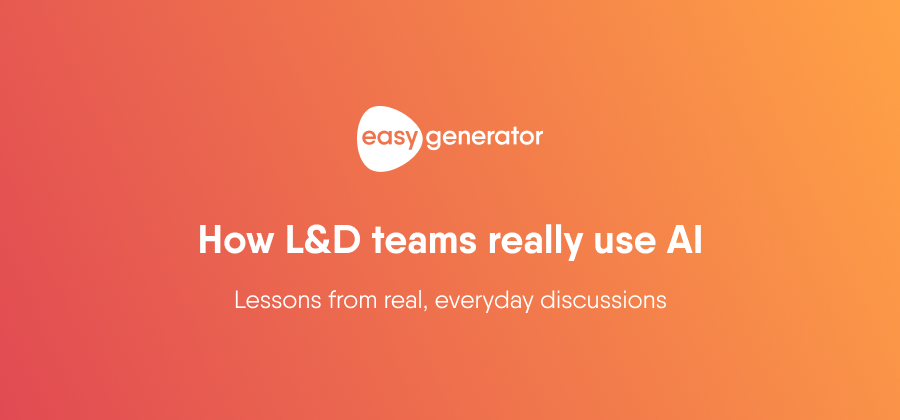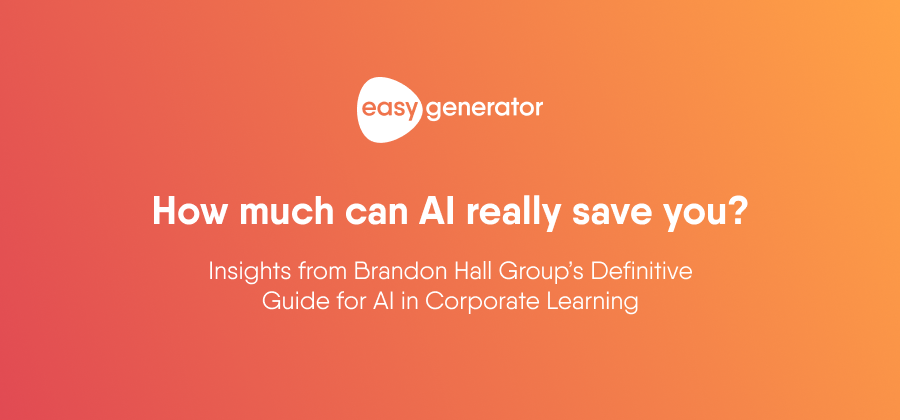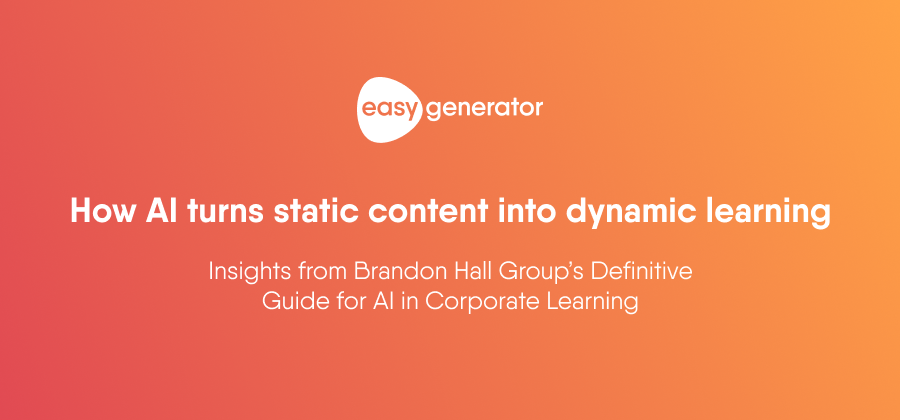Adopting a blended learning approach: the why and how
Blended learning is receiving more and more attention. But it doesn’t get enough yet. Successful online training is a fundamental component of blended learning. But just how important is this part, and how do you make e-learning and blended learning truly effective?

A blended learning approach is a combination of traditional face-to-face education and e-learning. By adding online training created with an authoring tool, students’ learning improves in quality and they grow their in-depth knowledge. Students’ efficiency also improves because students can take their time to learn and focus extra on topics they struggle with during their spare time without the need of the teacher.
Read our blended learning guide.
How e-learning is applied in a blended approach
You can apply online training to blended courses in various ways. Which way is the best for employees at your organization, depends on the strategy and needs.
Pre-teaching
Pre-teaching allows learners to study the preliminary material before the actual training session. This enables learners to stay prepared and avoid repetition of the basics in the classroom. Consequently, the trainer’s time can be used for discussion and queries in-class time.
Flipped classroom
In order to improve the quality of learning, blended learning suggests doing homework in class with the lesson taking place at home using e-learning. Why? When students learn facts and processes at home, teachers can focus on applying the knowledge and making sure every student understands. By doing the learning at home, students can also take their time and learn at their own speed.
Repetition
Not all repetition is bad. Humans forget 90% of what they learn within the first few hours of learning it. Repetition is the key to beating this forgetting curve. A blended learning approach enables the repetition of learning content in multiple formats – e-learning courses, quizzes, group work in class, etc.
Create a blended learning program
Our experts put together the ultimate guide to help you set up a blended learning solution and launch a successful program. Get your free copy now.
Additional benefits of online training within blended learning
A blended learning approach improves the quality of students’ learning, is more efficient than just classroom training, and helps beat the forgetting curve. But these are not the only benefits of blended learning. There are more.
Co-authoring
Creating e-learning has a huge benefit for teachers. Authoring tools have the option to add co-authors, which allows teachers to work together. When two or more teachers capture combined knowledge online, there is more chance of hitting the mark for learners.
Automatic grading
Teachers can obtain students’ scores within seconds after tests and online course participation. With this data, teachers can see who is learning well and who is still struggling. With traditional learning, the only way to find out who is struggling is for students to admit it and they very rarely do this for fear of ‘sounding silly’ or being mocked. Once the teacher knows, they can use flipped learning to do homework in class and really help those who are struggling to retain the information and understand it successfully.
Improve motivation of your learners
Blended learning and e-learning courses can be fantastic for motivation because students are awarded more control over their learning. They can improve their own development by spending time online whilst receiving the right support they need from the teachers. This is also good news for teachers. They can better utilize their own skills and be aware of when students lack the understanding of certain topics.
More focus on students’ strengths and weaknesses
Online learning allows for more personalized learning. Teachers have data for the strengths and weaknesses of each student. That gives them an opportunity to bring everybody up to the same level. With simple tests and scores, teachers can assess performance within seconds!
Start implementing these changes in your organization with our tips for an effective blended learning approach.



